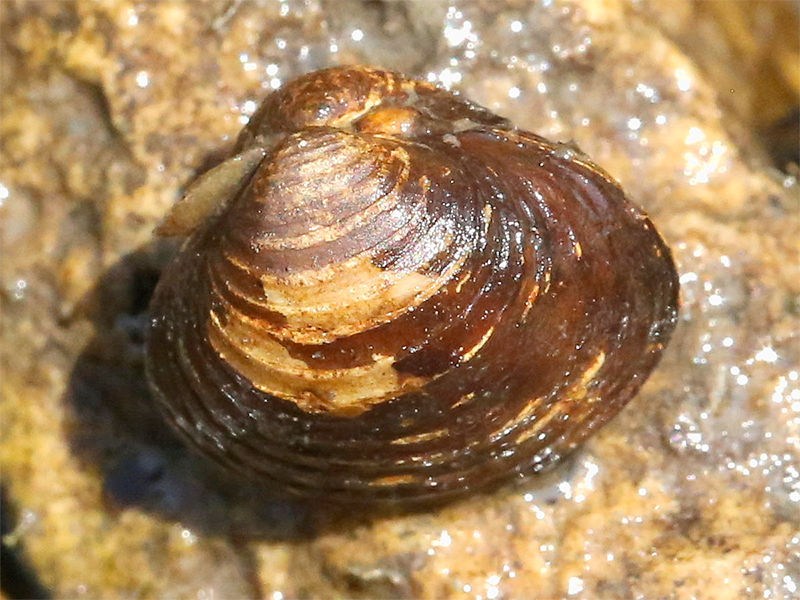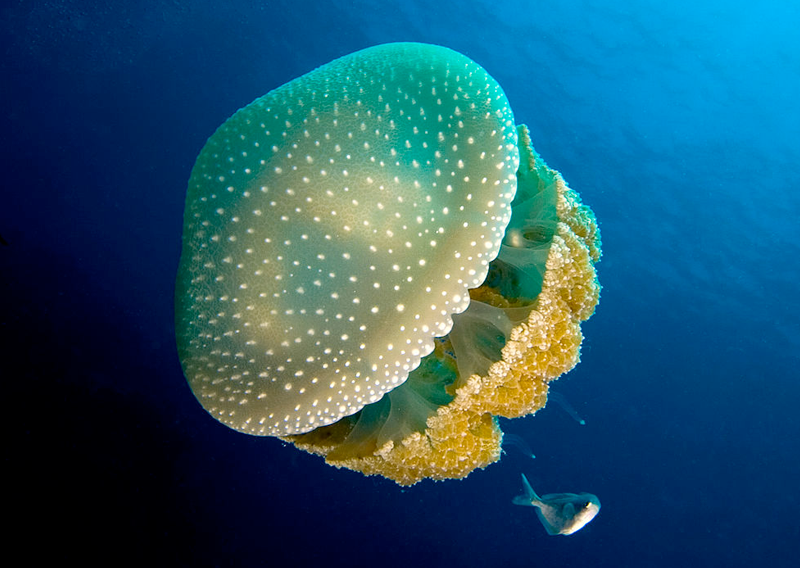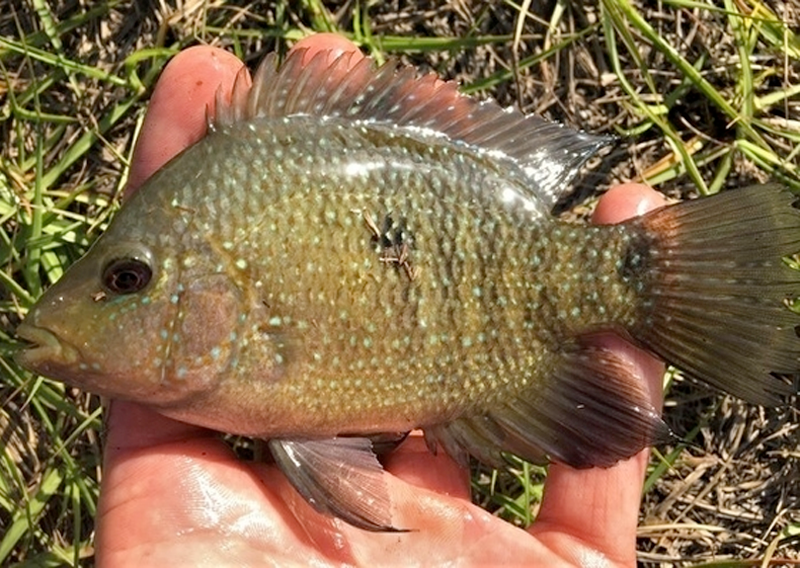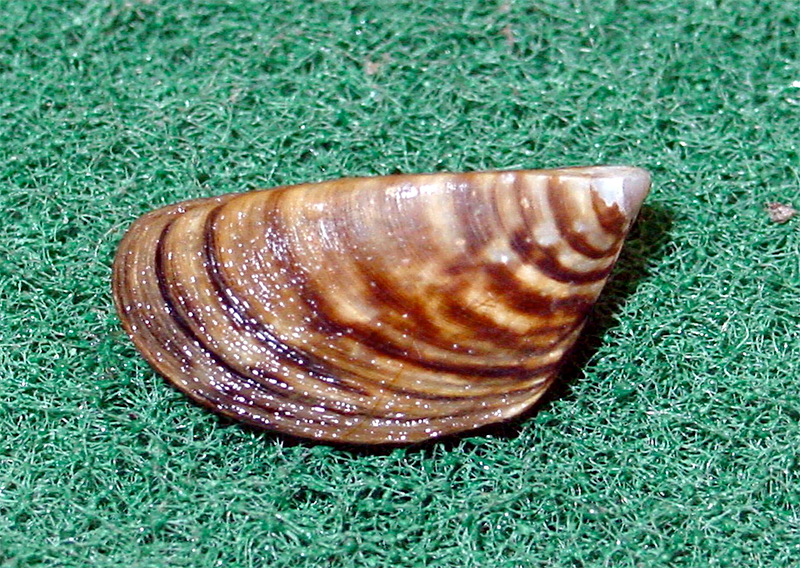Asian Clam (Corbicula fluminea)
Origin and Date of Introduction: China; first discovered in 1938.
Pathway / Media: Waterways: gravel shipments, dumped bait and aquarium water.
Reason for Introduction: Deliberate, for food by Chinese immigrants in Knappton, Washington; accidental introduction by aquaculture.
Preferred Habitat: Freshwater aquatic ecosystems.
Ecological / Economic Damage: Alters benthic substrate, competes with native species for resources, and causes biofouling of industrial water plants and power plants. Asian clams clog irrigation and drainage canals as well as industrial water distribution systems.

Photo: Wikimedia Commons
Futher Reading: USDA National Invasive Species Information Center
Australian Spotted Jellyfish (Phyllorhiza punctata)
Origin and Date of Introduction: Australia; 1950s-1970s to Caribbean; population exploded along Gulf Coast in 2000.
Pathway / Media: Shipping traffic brought jellies to Caribbean; eddies from loop current in northern Gulf of Mexico probably brought them to Gulf Coast.
Reason for Introduction: Accidental.
Preferred Habitat: Marine.
Ecological / Economic Damage: Potential adverse impacts on Gulf of Mexico fisheries. Australian spotted jellyfish consume large amounts of plankton, potentially impacting gulf fisheries in general and the Louisiana shrimp industry in particular. Growing to over two feet in diameter, they form schools large enough to be spotted from aircraft. They are seen here as white dots in the waters of Lake Borgne.

Photo: DOI, USGS NAS
Futher Reading: USDA National Invasive Species Information Center
Rio Grande Cichlid (Cichlasoma cyanoguttatum)
Origin and Date of Introduction: Rio Grande Valley; circa 1990.
Pathway / Media: Waterways; aquarium water.
Reason for Introduction: Accidental, probably through dumped aquarium water.
Preferred Habitat: Freshwater aquatic ecosystems.
Ecological / Economic Damage: Outcompetes native fish; depletes food resources; may harbor parasites. The Rio Grande Cichlid, discovered in Lake Pontchartrain and canals in the New Orleans area in the 1990s, may pose a threat to native fish through competition for resources and by the parasites that it harbors.

Photo: USGS, Nonindigenous Aquatic Species
Futher Reading: USGS, Nonindigenous Aquatic Species
Zebra Mussel (Dreissena polymorpha)
Origin and Date of Introduction: Caspian and Black seas; mid-1980s.
Pathway / Media: Mississippi River and connecting waterways; ballast water.
Reason for Introduction: Accidental, to Great Lakes region.
Preferred Habitat: Freshwater aquatic ecosystems.
Ecological / Economic Damage: Clogs intake and sewer pipes, out-competes native mussels. Zebra mussels found their way to Louisiana by means of ballast water from the Caspian and Black seas dumped in waters that eventually flowed into the Mississippi. Recent experiments show that radio waves may control zebra mussel populations without harming native species.

Photo: DOI, USGS NAS
Futher Reading: USDA National Invasive Species Information Center

